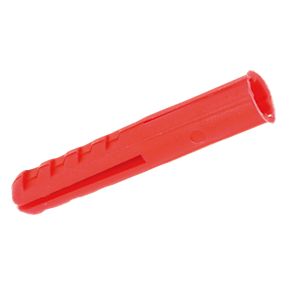Yes, it should. But, that would need a thin screw so that the plug material at the mouth of the hole doesn't pull the screw in resulting in a cracked tile. In user videos, it took significant force to make the knot. The force deformed the wood significantly on the screw head side. Same thing happening on a tile would crack it.
A 5mm screw is borderline too large for the UX6. This makes it impossible for a pull out without destroying the tile. Tile damage appearing would give advanced warning of the shower screen failure.
True. But the modern plug is slightly better. It keeps the screw straight. Also, the plug is attached to the screw in the back acting as a secondary anchor should the front side fail.
I don't understand why the tile would crack if it had been "laid" correctly (ie. with no cavity behind it).
I have to admit that, even in my own home, I have dot an dabbed tiles in the window reveal (top and sides). When someone has drilled off a dab and tightened the screw, it resulted in a/the tile cracking.


